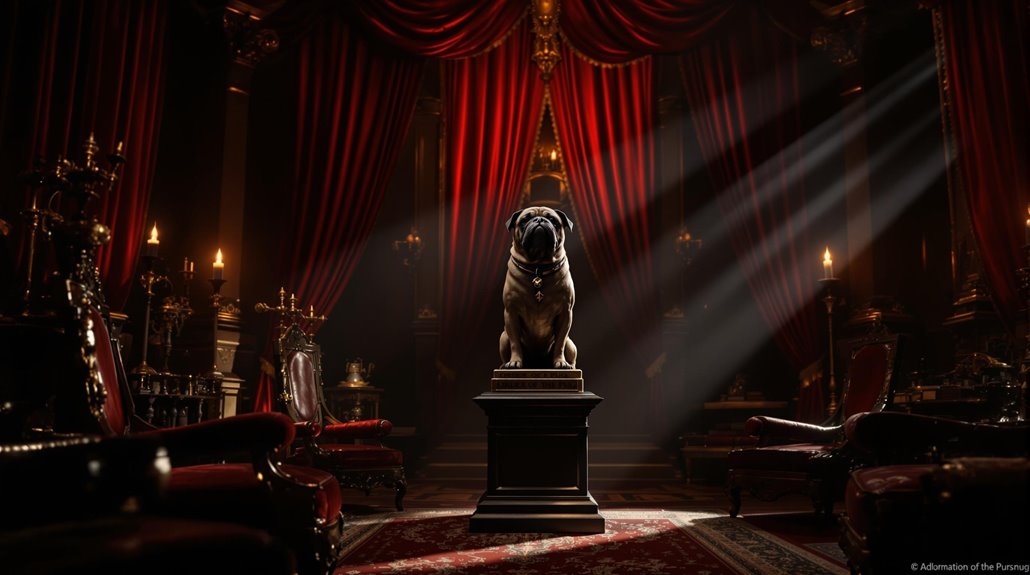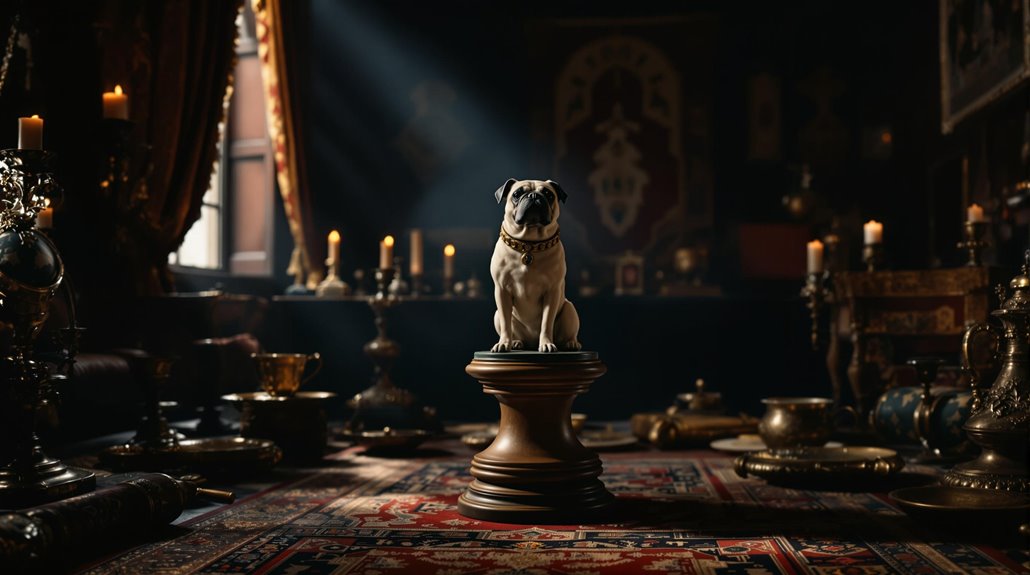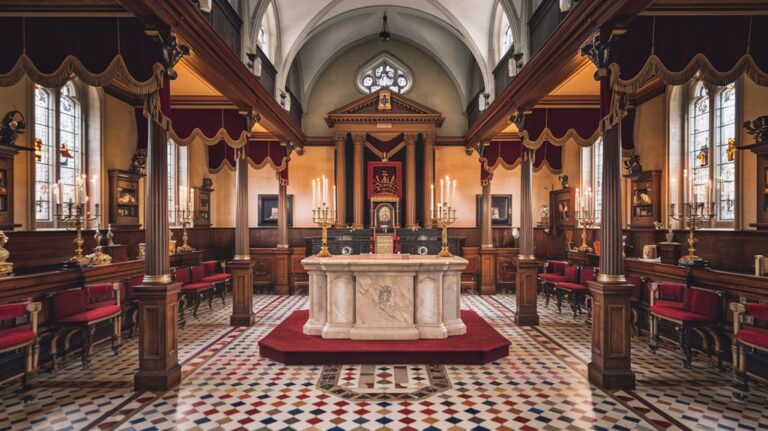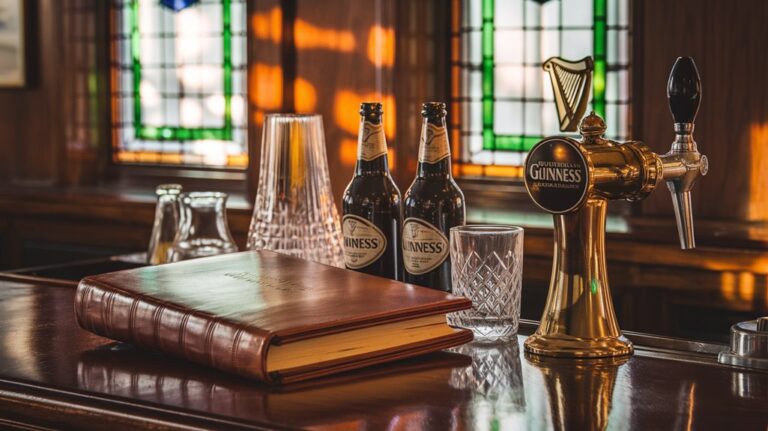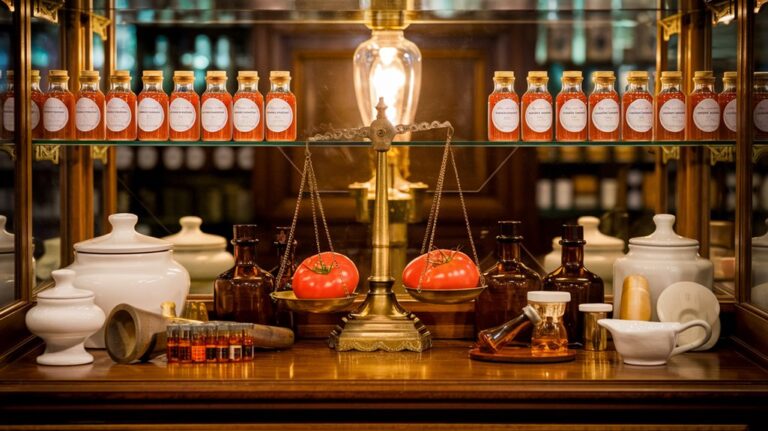A Secret Society Existed Called the Order of the Pug
Like a wrinkle-faced guardian of ancient mysteries, the pug dog served as an unlikely mascot for one of history's most peculiar secret societies. You've probably heard of the Freemasons, but you won't find many who know about the Order of the Pug. Founded in 1730s Bavaria, this unique brotherhood (and sisterhood) had members crawling through paper hoops and wearing dog collars during initiation. There's much more to uncover about this strange organization that dared to challenge the status quo.
The Origins of The Order of the Pug
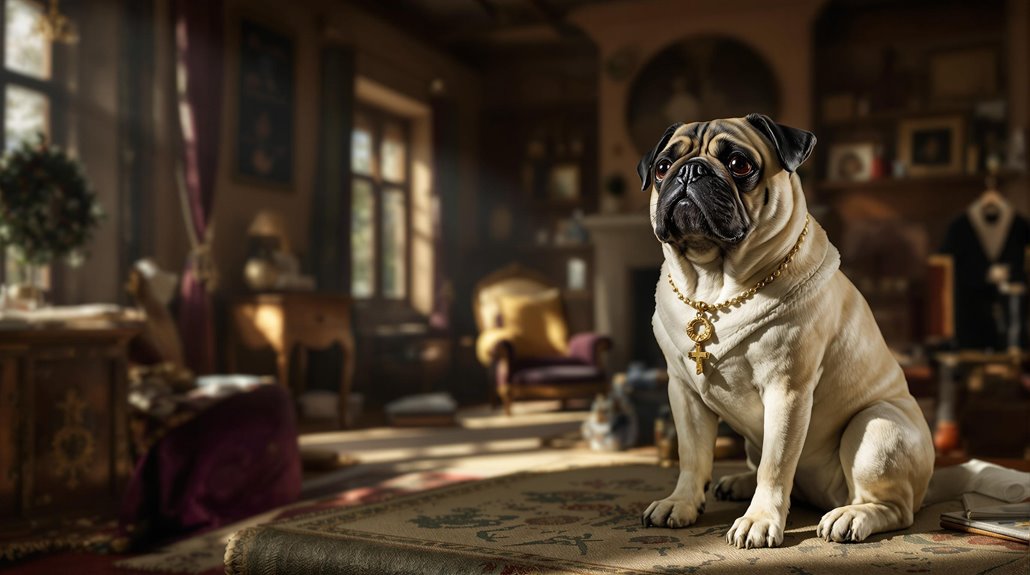
While Pope Clement XII's ban on Freemasonry in 1738 frustrated many Catholics, it sparked the creation of a unique alternative: The Order of the Pug.
You'll find the Order origins tied directly to Klemens August of Bavaria, the Archbishop-Elector of Cologne, who established this secret society around 1738-1740 to bypass the papal prohibition.
The organization's Bavarian roots quickly took hold as it spread beyond its birthplace to France, the Netherlands, and other parts of Germany.
You'd be surprised to learn that this Catholic-friendly society welcomed both noblemen and commoners, men and women alike. Members of the society were called Mops in German and adopted characteristics of the breed.
Unlike traditional Masonic lodges, the Order created a distinctive blend of Catholic elements with secret society traditions. Each lodge operated under the leadership of male and female masters, who took turns managing the organization.
A notable presence emerged in Bayreuth, Germany, where an active lodge operated during the Order's early years.
Why Pugs Became Their Sacred Symbol
The Order's choice of a pug as its sacred symbol reflects both clever symbolism and historical significance. The breed's deep connection to Chinese emperors and European royalty made it a powerful representation of defiance against papal authority while maintaining an innocent appearance.
Pugs embodied the exact qualities the secret society sought in its members:
- Unwavering pug loyalty and trustworthiness
- Adaptable and people-pleasing nature
- Strong historical ties to nobility
- Cultural symbolism of good fortune
You'll find that these characteristics perfectly aligned with the Order's needs. The breed's cheerful temperament and compact size made it an ideal choice for secret meetings, while its historical significance as a companion to Buddhist monks added a layer of spiritual meaning. Members demonstrated their dedication through ritualistic dog collars during initiation ceremonies. The members' quick acceptance of change made them particularly suitable for adapting to the society's evolving practices.
The pug's distinctive appearance also made it easily recognizable among members, strengthening their bond through shared symbolism.
The Mysterious Initiation Ceremonies
Secret societies often developed elaborate rituals, but none matched the peculiar theatrics of Order of the Pug initiations. You'd find yourself wearing a brass collar, scratching at the lodge door, and being led blindfolded around a carpet nine times while members barked at you to test your resolve. Like many ancient mystery religions, these ceremonies featured dramatic portrayals of sacred stories.
The secret ceremonies involved wearing white robes with specific body parts exposed, donning grass slippers, and kissing a porcelain pug statue's backside. You'd crawl on the floor while members, who oddly claimed to be thumbless, guided you through four distinct sections. The group was established in 1738 after Papal restrictions on Catholics joining Freemasonry.
The initiation rituals included a traditional history lesson, lodge consecration, and a meaningful catechism. Perhaps most intriguingly, you'd take a blood brotherhood oath by mixing your blood with wine, all while mysterious elements like a toilet stood present during the ceremony.
Women's Unique Role in the Secret Society
Unlike most exclusive fraternal organizations of its time, Order of the Pug embraced women as full and equal members, establishing a revolutionary approach to gender inclusion.
The society's commitment to women's empowerment was evident in their unique leadership structure, where male and female Big Pugs shared governing responsibilities and alternated as Grand Pug every six months. The Order was established in around 1740 as a Catholic alternative to Freemasonry.
You'll find that the Order championed gender equality through several groundbreaking practices:
- Women held positions of authority equal to their male counterparts
- Seating arrangements integrated both genders based on hierarchy, not sex
- Artistic representations prominently featured women with their pug companions
- Female members participated fully in all ceremonies and rituals
This progressive stance on women's roles set the Order apart from traditional Masonic societies that typically excluded women from membership and leadership positions.
Members were required to display qualities like tenderness and sweetness, characteristics that helped create an inclusive environment welcoming to both men and women.
The Rise and Fall of the Pug Order
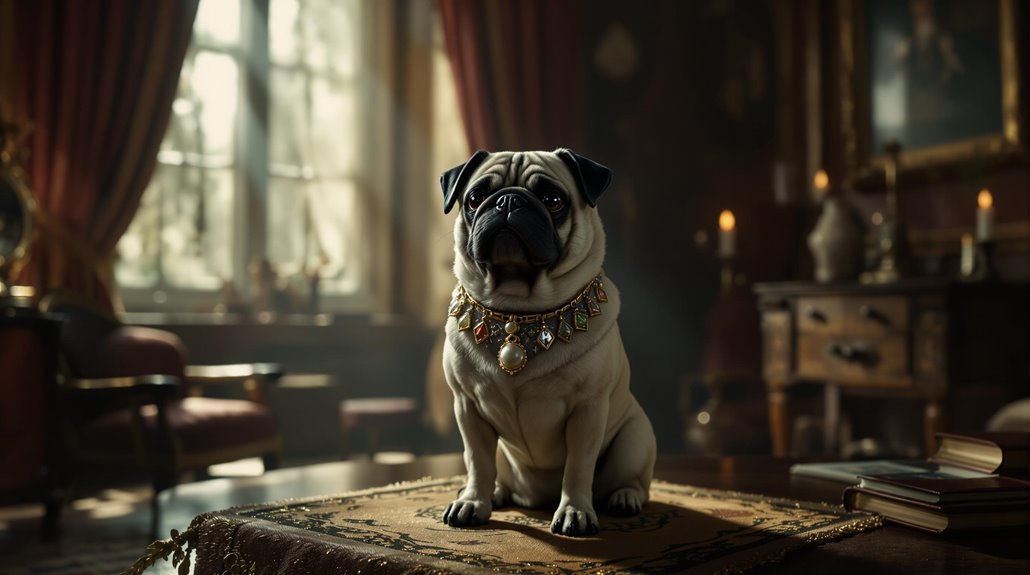
While the Order's progressive gender policies were remarkable, its overall existence proved relatively brief yet fascinating.
You'll find that the society emerged in 1738 when Archbishop-Elector Klemens August of Bavaria established it as a response to the papal ban on Freemasonry. The pug symbolism represented loyalty and trustworthiness, qualities that attracted Catholic nobles seeking fellowship through secret society membership. The Order's unique initiation rituals required new members to wear brass dog collars and crawl blindfolded. Both men and women participated in leadership roles under the guidance of a Grand Master and Mistress.
Despite its societal impact in providing Catholics an alternative to Freemasonry, the Order's downfall came swiftly.
In 1745, Catholic abbot Gabriel-Louis-Calabre Pérau exposed its secrets in his revealing book, leading to its official ban.
Though the Order's formal existence lasted only about a decade, rumors persisted of continued activities in Lyon until 1902, suggesting its influence extended beyond its official dissolution.

